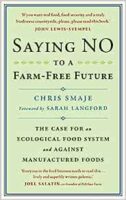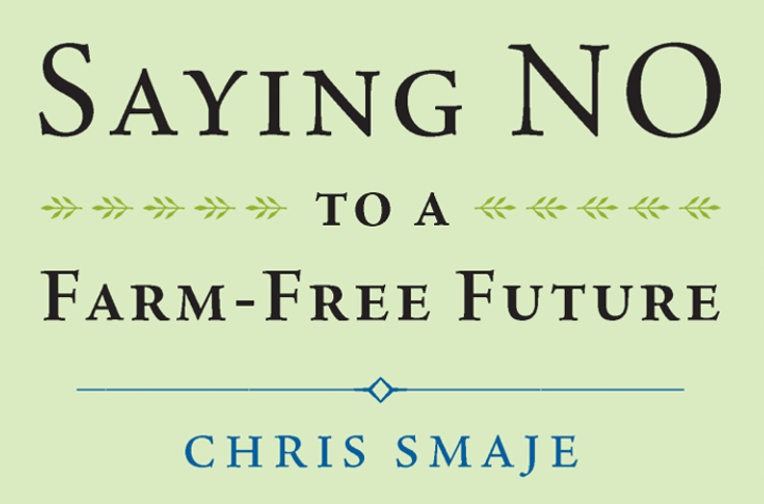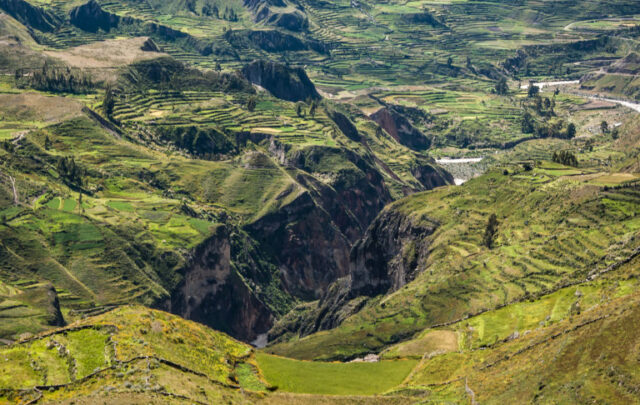 Ed. note: For the next few days, we are helping long-time regular contributor Chris Smaje highlight the UK release of his new book, Saying NO to a Farm-Free Future (available in the US on 20th July). Today we are posting a review by one of our long-time contributors, Mary Wildfire.
Ed. note: For the next few days, we are helping long-time regular contributor Chris Smaje highlight the UK release of his new book, Saying NO to a Farm-Free Future (available in the US on 20th July). Today we are posting a review by one of our long-time contributors, Mary Wildfire.
Before reviewing this book I need to state three caveats. First, I’m totally a Smaje fan. I’ve read his Small Farm Future twice, and did a review of it on this site (here). Second, this book is a rebuttal to ecomodernist claims—and I have no respect for ecomodernism. And last, a key issue in the latest ecomodernist claims is that we should replace farmed food with food manufactured in vats, like the fake meat lately being pushed…and I find the idea creepy, appalling, shuddersome. Now, having enumerated my biases, on with the review.
The first thing to note is that this book is both shorter and easier to read than Small Farm Future…it has a lower level of diction. But this is largely because it has a much smaller purview, being basically a rebuttal to recent ecomodernist claims, primarily those of George Monbiot. Smaje notes that Monbiot used to put forth incisive, radical thinking on ecological issues, before being kidnapped and inducted into the ecomodernist camp. He once refers to the recent writings as coming from “George Monbiot, Mark Two.”
You may wonder why a whole book needs to be devoted to a rebuttal of mostly one writer. Smaje addresses this early by pointing out that Monbiot has earned a major platform that gives him a lot of credibility; Smaje seems to think ecomodernists in general are gaining an increasing audience, with their prescriptions for nuclear power, genetic engineering, urbanizing and rewilding, and now “rebooting food” so that it’s manufactured in factories. (Of course, we already manufacture a lot of food in factories, although we still start with farm produce of some sort. I note that this highly processed food has been found to be nutritionally inferior, blamed for the epidemics of obesity, high blood pressure, diabetes and cancer—an aspect Smaje doesn’t focus on.) He notes that this “techno-solutionism” suits the powerful and wealthy as it purports to allow industrial, high-energy-throughput modes to keep on keeping on.
Much of the argument is over “land sparing versus land sharing,” meaning whether more wildlife will survive if 90% of us live in dense cities and manufacture our food there, leaving perhaps half the Earth untouched by humans, the prescription of Monbiot et al—called land sparing—or we instead learn to farm and produce other necessities in ways that don’t decimate wildlife, land sharing. One of Smaje’s arguments here is over the enormous drain on resources to provide housing and such for the two billion additional people who’d need to move to cities. Yes, he does acknowledge that his prescription for a small farm future involves a similar movement, in the opposite direction, though he finds reasons to claim it would be less onerous.
Speaking as a rural resident, I ain’t going voluntarily—they’ll have pry my homestead from my cold dead fingers. Is this how most rural people feel? I expect so.
The key argument here is that the manufactured food scheme might produce 15 tons of protein in a hectare, as opposed to just 1.1 tons from an acre of soybeans—as claimed in a study in the Proceedings of the National Academy of Sciences—but Smaje comes up with a calculation that the energy costs of growing the world’s protein this way would require 89% of its low-carbon electricity, meaning nuclear, hydro and renewables—and that’s just the protein. Then there’s the “energy” or carbohydrates. Clearly this makes no sense at all—how many hectares of solar panels would be needed to supply that one hectare of protein vats? Yet Monbiot is on a European tour of his book Regenesis that touts all this, and tech billionaires are busy investing in it. This doesn’t surprise me as I see the same thing happening within the energy sector, where large amounts of public money are going into Carbon Capture and Storage, blue hydrogen and small modular nuclear reactors—a little investigation shows that none of these will help with climate change, but they will preserve the fossil fuel industries and status quo.
Incidentally, one lesser point from a chart in the book is that the whole cow fart claim about why we should stop eating beef has been blown out of proportion. The contribution of the agricultural sector to climate change is broken into parts, most of them rated at less than two percent. “Enteric digestion” is one of only three that are higher, at just under five percent. “Forest conversion” is five percent (razing forests to grow crops). Then there’s “energy”—at 60%!
Smaje said he took time to write this book because he’s afraid these nonviable “solutions” will waste precious time, which we can’t afford.
A few quibbles I have with the book: Smaje said on page 92 that trees only sequester carbon for their first few decades, thereafter becoming carbon neutral. This is the opposite of what I recently read, and I believe it was in Suzanne Simard’s book, Finding the Mother Tree; she’s been studying forests all her life so I’m inclined to trust her on this.
He does mention, but not enough, that the optimum way to feed any local community varies greatly depending on climate, terrain, even culture. There is no one right protocol for farming.
And he says we need a rural, localized agricultural system that is “job-rich.” I think a lot of our problems come from the assumption that people are passive, dependent, unable to find a way to make a living and in need of some Big Daddy Entrepreneur to come along and provide a job. If the subsidies directed to those large, profitable corporations were instead used to assist would-be small business people, we’d all be much better off. Of course, as Smaje notes, we’re also better off if most of us own our homes and have a little land where we can cultivate our own food—we may need additional income but with that security we’re in a position to choose the best option.
Who needs to read Saying No to a Farm-Free Future? Anyone thinking that the ecomodernist prescription might be a good idea; and anyone arguing with ecomodernists and looking for data to back up their feeling that “food” factories in megacities is not the best path.





